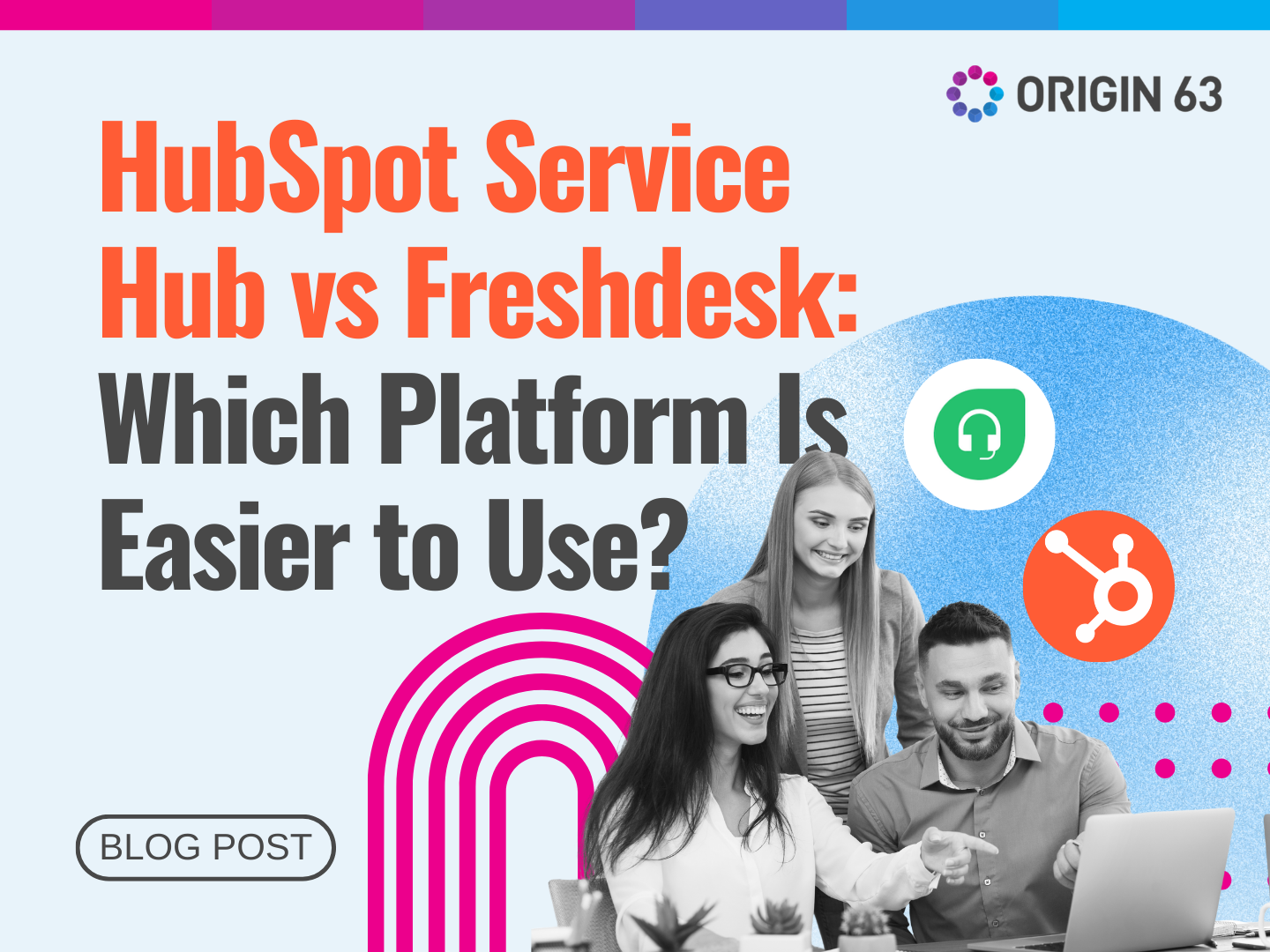Customers expect outstanding service. However, there’s a difference between simply solving a customer's problem and making them feel valued.
Some companies take a basic "transactional" approach to customer service. They just want to resolve issues quickly without personal connection. Other companies go above and beyond with "relational" customer service, taking the time to understand each customer's needs.
If you want to retain more loyal customers, you need the relational approach. This blog dives into the difference between transactional and relational customer service and shows you how to shift your approach to create loyal fans of your brand.
What Is Customer Service?

Customer service is how a company treats its customers before, during, and after they buy a product or use a service. It's the experience and interactions a customer has with the business.
Good customer service can make or break whether someone enjoys their overall experience with a company. For 88% of customers, how a company treats them is as important as the products or services sold.
If the service is bad, even a great product won't matter — the customer will be left with a sour taste and likely won't return. But if the service is friendly, helpful, and goes the extra mile, customers will be delighted and become raving fans.
Understanding the Difference: Transactional Vs. Relational
There are two main philosophies of customer service: transactional and relational.
Transactional customer service treats each interaction like a transaction that must be completed quickly. The goal is efficiency—resolve the customer's issue as fast as possible with minimal fuss, then move on to the next one. There's no real personal connection made.
Relational customer service is the opposite. Here, the company sees every opportunity as a chance to build an ongoing relationship with the customer.
The focus is on truly understanding the customer's needs and delivering a personalized, memorable experience that makes them feel valued. It's about creating loyal fans, not just closing tickets.
In transactional service, you're just a number. In relational service, you're a human being that matters.
Companies that do relational service will make customers feel like they're being treated as individuals, not anonymous customers. That's what separates the good from the bad regarding customer satisfaction.
Let’s break it down:
|
Transactional Customer Service |
Relational Customer Service |
|
|
Focus |
Efficiency |
Building Relationships |
|
Goal |
Resolve issues quickly |
Understand customer needs, create a memorable experience |
|
Customer Interaction |
Impersonal, one-off transaction |
Personalized, ongoing engagement |
|
Customer Perception |
Feels like a number |
Feels valued |
|
Example |
Script-driven call center resolving a basic issue |
Personalized solutions are offered after understanding the customer's specific needs |
|
Outcome |
Short-term resolution |
Long-term loyalty and advocacy |
Why Do You Need Relational Customer Service?

Providing great transactional service is the bare minimum. If you want to beat the competition and build a tribe of loyal advocates, relational customer service is an absolute must.
1. Keeps Customers Coming Back
Excellent customer service boosts the likelihood of customers making repeat purchases and renewing by 82%.
When customers feel like you genuinely care about them and have taken the time to understand their needs, they're much more likely to remain loyal.
Relational service builds sticky relationships that are hard for competitors to break.
2. Turns Customers into Brand Advocates
People love to brag about companies that have blown them away with exceptional service. If you make your customers feel special, they'll become walking billboards who rave about your brand to friends and family. Word-of-mouth marketing is priceless.
85% of American consumers will recommend a company if they rate its service as "very good.”
Think about the companies you rave about to others — chances are, it's because of how well they made you feel through exceptional, personalized service that went above and beyond.
3. Increases Customer Lifetime Value
It costs 6-7 times more to acquire a new customer than to retain an existing one.
However, when you prioritize relationships over transactions, customers stick around longer and spend more with your business over time, and the lifetime revenue numbers increase quickly.
4. Helps You Stand Out
In an industry of automated chatbots and impersonal exchanges, taking a human, relational approach to service is a surefire way to differentiate your brand.
Customers crave that personal touch and connection. 78% of customers who use chatbots still need to connect with a human agent afterward.
How to Move From Transactional to Relational Service
Shifting from a transactional mindset to a relational approach takes some adjustments, but it's totally doable. Even small changes can make a big difference in how customers perceive and feel about your brand.
Follow these simple tips to get started:
1. Use Their Name
This one seems a no-brainer, but you'd be surprised how often it gets overlooked. Calling customers by their actual name is such a simple yet powerful way to make interactions feel personal right from the start.
It immediately shows that they aren't just some anonymous customer number in your eyes — they're a real human individual you're connecting with.
Using someone's name is a sign of acknowledgment and basic respect. It says, "I see you as a person, not just another ticket to close out."
67% of consumers believe it's important for brands to automatically adjust content based on the current context. When brands don't do this, 42% get annoyed that the content isn't personalized.
Tools like HubSpot's personalization tokens can help make this process easier. These tokens allow you to customize emails, website pages, and more by inserting personal details about each contact from your CRM system.
Their name, company, location, interest areas — any tidbit that makes the experience feel personalized just for them.

2. Study Their History
Thanks to modern CRM systems and tools, companies now have a wealth of data about each customer's history with the brand. You can see their purchase records, service interactions, communication preferences, and more.
Don't let that valuable context go to waste! Review the customer's history a few minutes before every conversation to personalize your approach and assistance.
Little things like referencing a past issue they had or a product they love create a "wow, they really know me" feeling that builds trust and rapport. It makes people feel known and understood as individuals.
For example, HubSpot's CRM platform can help you leverage customer history for more personalized service. A contact's details, activities, and previous conversations are easily accessible in one unified view.

Your service reps can quickly learn who the customer is and their history with your company before jumping on a call or into a chat.
3. Listen Actively
The best relationships are two-way streets built on mutual understanding. Customer service can't be a one-way data dump. That's the old transactional approach.
For relational service, you should actively listen to what the customer is saying and have a real dialogue. Don't just passively wait for your turn to talk again.
Ask follow-up questions, repeat points, and have a back-and-forth conversation to understand their needs and wants and how you can truly help them in that specific situation. Active listening shows the customer you care about their unique perspective.
4. Watch Your Tone
The way you communicate is just as important as the words you use. Tone, language style, and even minor phrases can completely shift how a customer perceives you and the interaction.
You want a friendly yet professional tone that mirrors the customer's communication style. Match their level of formality and verbal approach — that sense of simpatico puts people at ease.
Avoid corporate speak that can come across as cold or insincere. Be conscious of negative phrasing like "issue" or "problem" that could make the customer feel defensive. Stay positive and in sync with their vibe.
Maintaining a consistent, on-brand tone can be challenging across channels and team members. That's where HubSpot's AI-powered brand voice tools can help.

These analyze your written content to ensure the personality and tone align with your brand's specific voice guidelines. You can apply these brand voice settings to emails, social posts, website pages, SMS messaging, and more.
5. Embrace Omnichannel
Customers expect to contact you in whatever way is most convenient for them—phone, chat, email, social media, etc. They don't want to restart conversations when they switch devices or platforms.
An integrated omnichannel approach with all your communication channels lets you pick up right where you left off for a seamless, uninterrupted experience. Customers can easily move between channels without missing a beat or having to re-explain everything.
This omnichannel flexibility shows you respect their time and communication preferences. It's all about making it effortless for the customer to engage with your brand.
6. Underpromise & Overdeliver
It's always better to underpromise and overdeliver when dealing with customers than the reverse. Set realistic expectations for resolution times, product capabilities, etc. But then look for small ways to exceed those expectations and add something extra quietly.
It could be as simple as including additional tips, personalizing their experience, or delivering sooner than promised. These little "wow" moments and surprises create lasting positive impressions.
Customers remember how you made them feel a lot more than they remember what you said. Overdelivering achieves that "they really went above and beyond" feeling that builds goodwill and loyalty.
One way to set and manage customer expectations is by using service level agreements (SLAs) in a tool like HubSpot's Service Hub. You can configure SLAs based on ticket priority, desired first reply times, and target resolution times.

This helps your team prioritize incoming tickets appropriately and ensure you're meeting customer commitments.
With SLAs in place, you know you're underpromising a reasonable timeframe, making overdelivering easier.
7. Follow Up
Just because the customer's original issue is resolved doesn't mean the interaction has to be over. Proactively following up in the days or weeks after can go a long way toward nurturing the relationship.
You could check in to ensure everything is still going smoothly, share helpful content like guides or videos, offer additional tips or training, or simply thank them for their business. You can also ask for feedback on their experience.
These little touches show your commitment to their long-term success and satisfaction. They aren't just another closed ticket to you. The customer feels you genuinely care about building an ongoing relationship with them.
It’s Your Turn to Switch to Relational Service
Relational service transforms customers from being one-time buyers into passionate advocates and fans of your brand. They feel like they're part of your company's inner circle, not just paying customers.
That's the power of relational customer service. It's not just about problem-solving but about creating memorable experiences that keep people returning for more.
Mastering relational service is an ongoing process but worth the effort. Even implementing a few tips in this blog can elevate your customers' experience and make them feel truly valued.
Build Lasting Relationships with HubSpot and Origin 63
This blog showed you the power of relational customer service. Now, it's time to take action! Partner with Origin 63, your HubSpot experts, to implement HubSpot Service Hub.
Service Hub is an all-in-one platform designed to help you deliver exceptional customer service, build stronger relationships, and boost customer satisfaction. Origin 63 will guide you through the entire process, from set-up to ongoing optimization.
Don't wait — contact Origin 63 today and unlock the full potential of relational customer service!













.png?width=90&height=90&name=Arrows%20Partner%20Badge-test%20(1).png)

